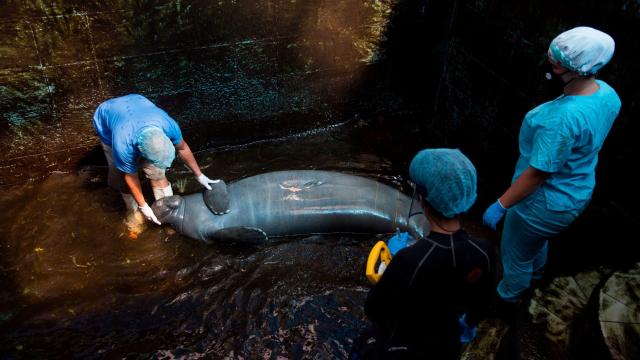After completing a rehabilitation process that has lasted years, Pepe, Lupita, and Juana are getting ready to go home. Their home isn’t like yours or mine, however: It’s in the ocean. That’s because Pepe, Lupita, and Juana are manatees, otherwise known as sea cows (and freaking adorable ones at that). They currently reside in at Dominican Republic’s National Aquarium, where they’ve cared for and brought back to health.
Their journey back to sea is an inspiration that we can get through tough times and get back to some sense of normalcy. Let’s take a look at the process of saving manatees and returning them to their natural habitat, and of course, let’s enjoy the glorious creatures themselves.
Meet the Manatee
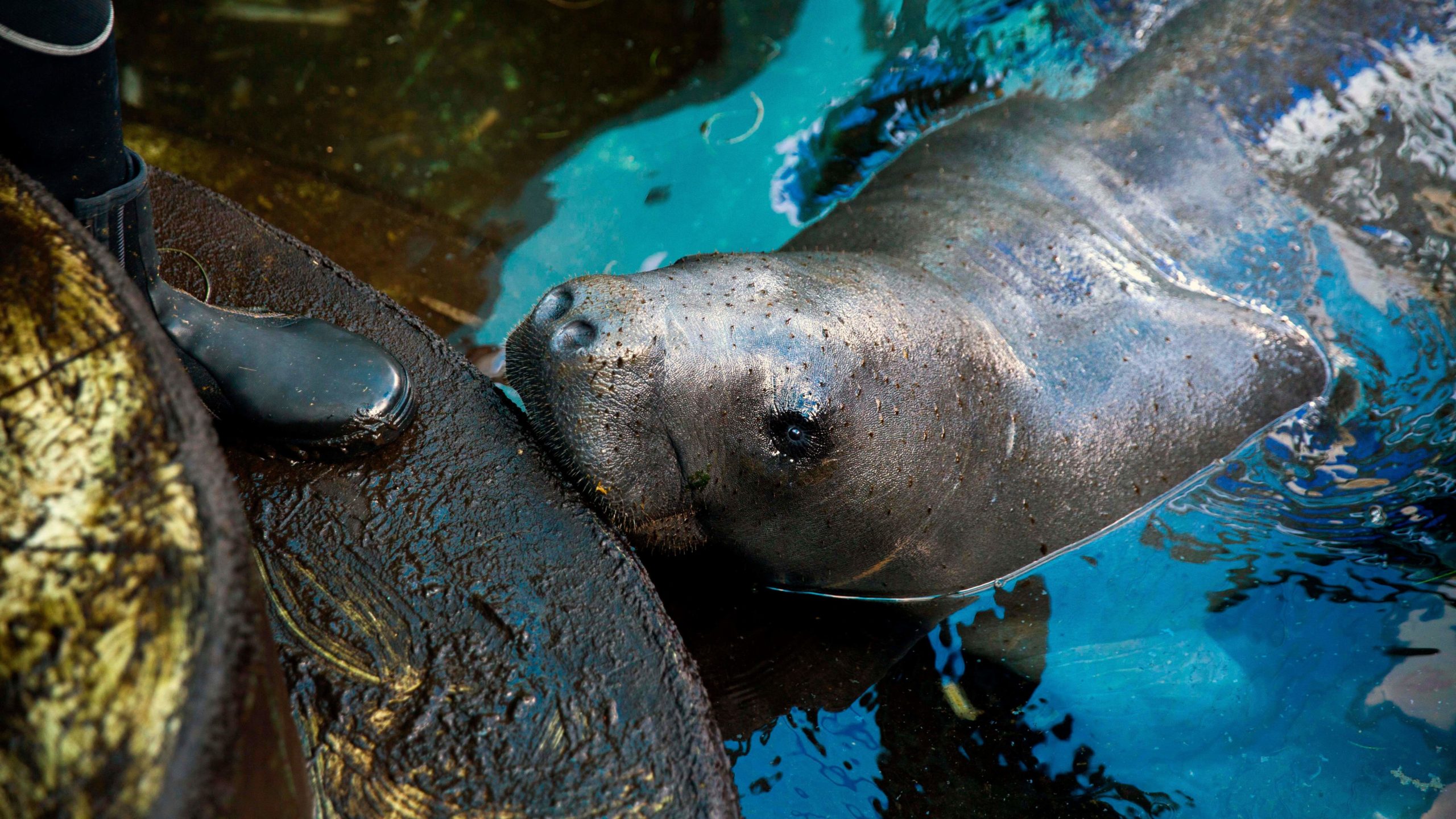
Manatees are mammals, which means they have to come up to the surface to breathe air. Although they never leave the water, they usually come up for air every five minutes. Never let it be said that manatees don’t like their downtime, though. When they rest, they can hold their breath for up to 20 minutes. And when they exert great amounts of energy, they might surface every 30 seconds.
These gentle giants are herbivores and include more than 60 species in their diet as well as floating plants. They eat between 10% and 15% of their body weight in food every day. While they eat a lot of plant species, manatees prefer sea grass on the seafloor, per the Department of the Interior. Experts look to these sea mammals to evaluate the health of ecosystems. If manatees are doing well, it means their immediate environment is also in good condition.
They’re Called Sea Cows for a Reason
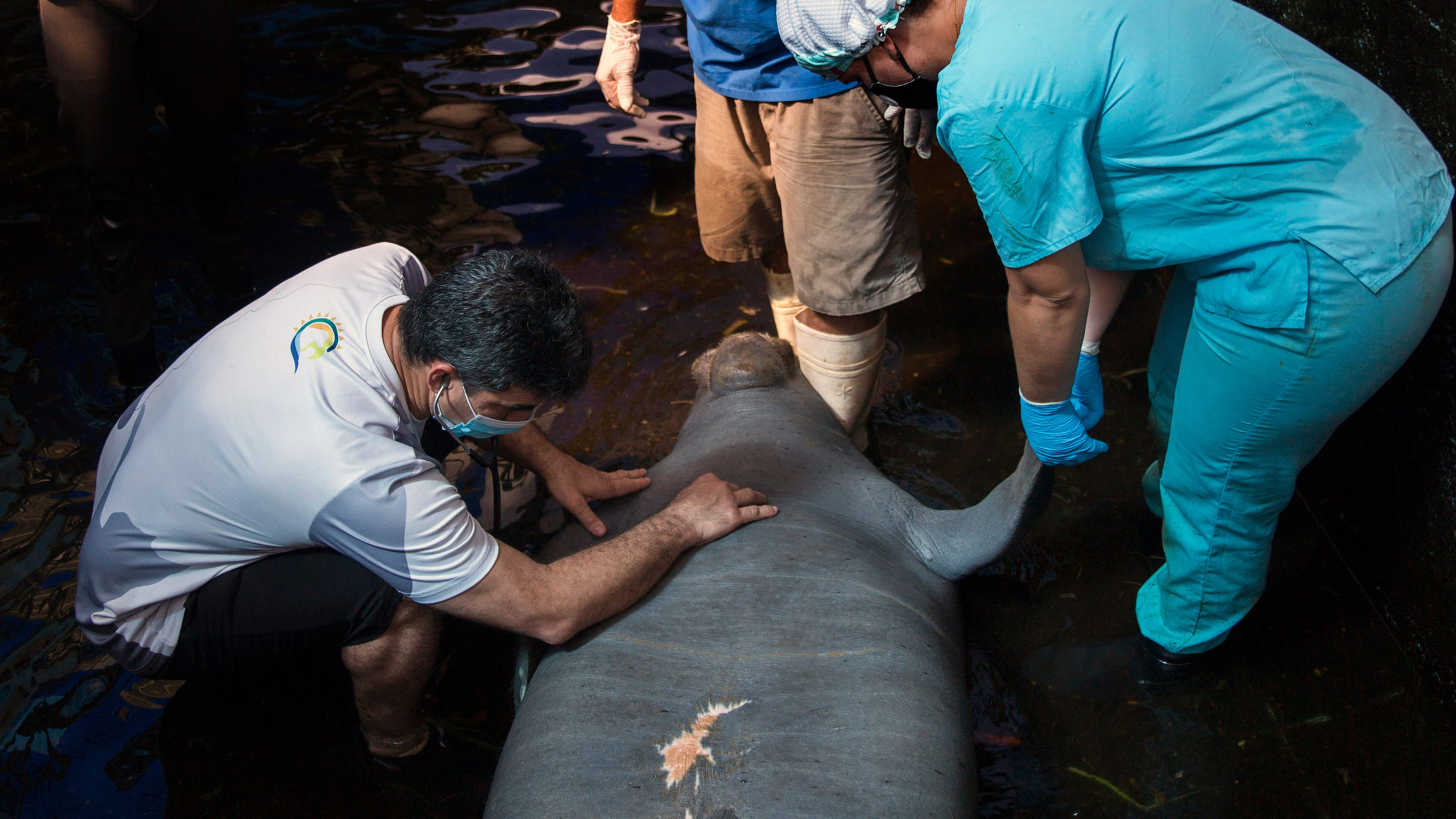
As you all can probably tell by words like “cow” and “giant,” manatees are pretty big. The average adult manatee is about 10 feet (three meters) long and weighs between 800 and 1,200 pounds (363 to 544 kilograms).
Fun fact: It’s believed that Christopher Columbus — yes, that Columbus — mistook manatees for mermaids on one of his journeys to the Americas in 1493. Columbus was a bit taken aback, though, and told others that the mermaids were not as beautiful as they were said to be because “their faces had some masculine traits.”
Humans Are One of Their Biggest Problems
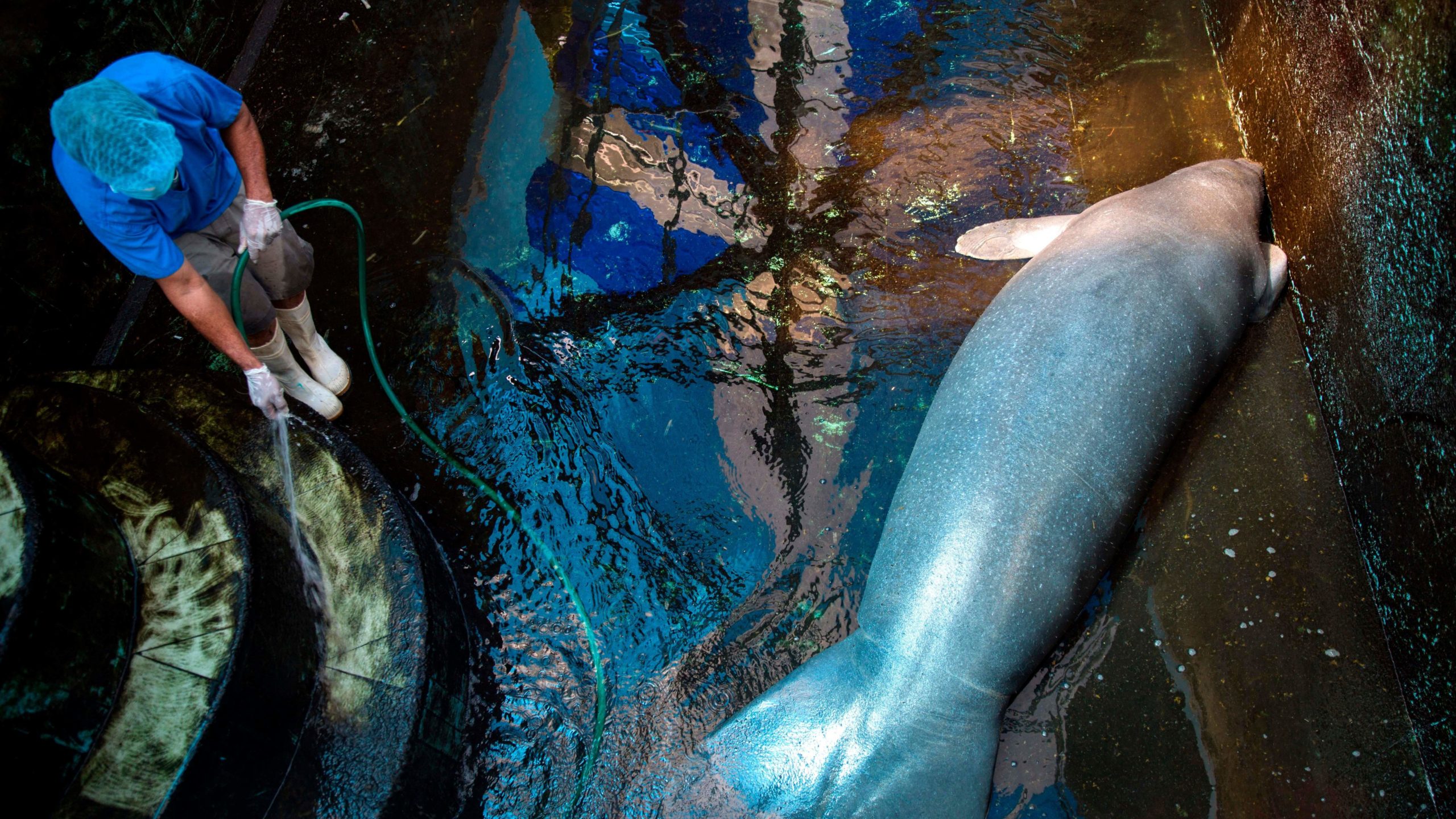
Unfortunately, humans are some of the biggest threats facing these gentle creatures. In Florida alone, 119 manatees were killed by boat strikes in 2018, according to the Association of Zoos and Aquariums. In other parts of the world, such as Brazil, manatees are hunted for their meat.
Nonetheless, there are also other dangers for these lovely sea cows. The Manatee Rescue and Rehabilitation Partnership notes that besides watercraft injury, reasons manatees need rescuing on occasion also include entanglement in fishing gear, red tide exposure, cold stress, entrapment and natural illnesses. Orphaned manatees also require rescue.
Thankfully, There Are Also Some Humans Dedicated to Saving Them
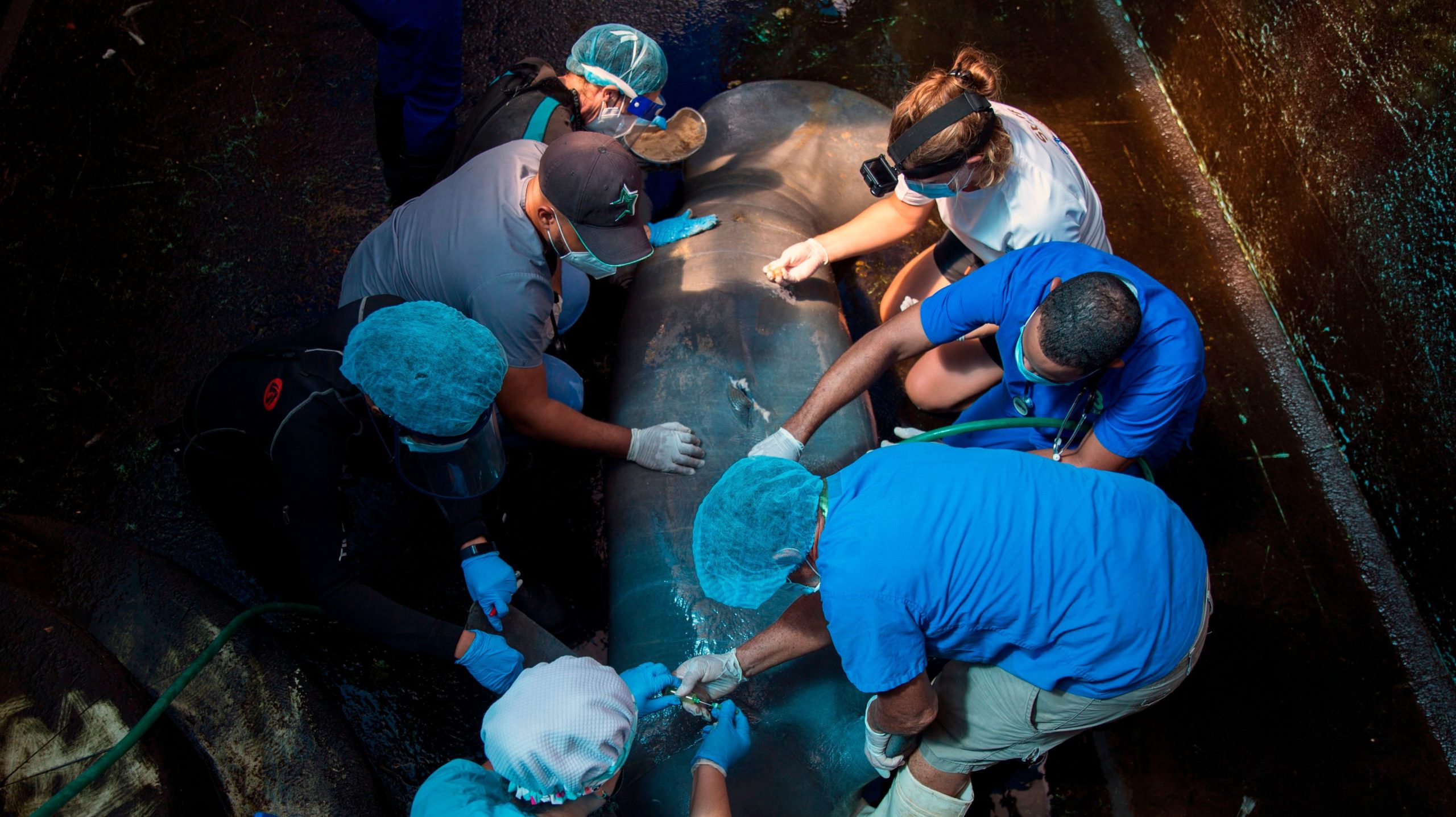
After being rescued, manatees are taken into special facilities, such as zoos and aquariums, for rehabilitation. This process is intense and can last months or even years. In Pepe, Lupita, and Juana’s case, the process took years. Per Spanish news agency EFE, Juana and Pepe are eight years old and only lived in the ocean for a few months before being injured by humans. The fact that they only lived in the ocean for a short time will complicate their return to their natural habitat. Lupita, on the other hand, is only three years old but lived in the ocean for a year before being rescued. EFE reports that this gives her a certain advantage when it comes to release.
Recovering and Going Back Home Isn’t Easy, Though
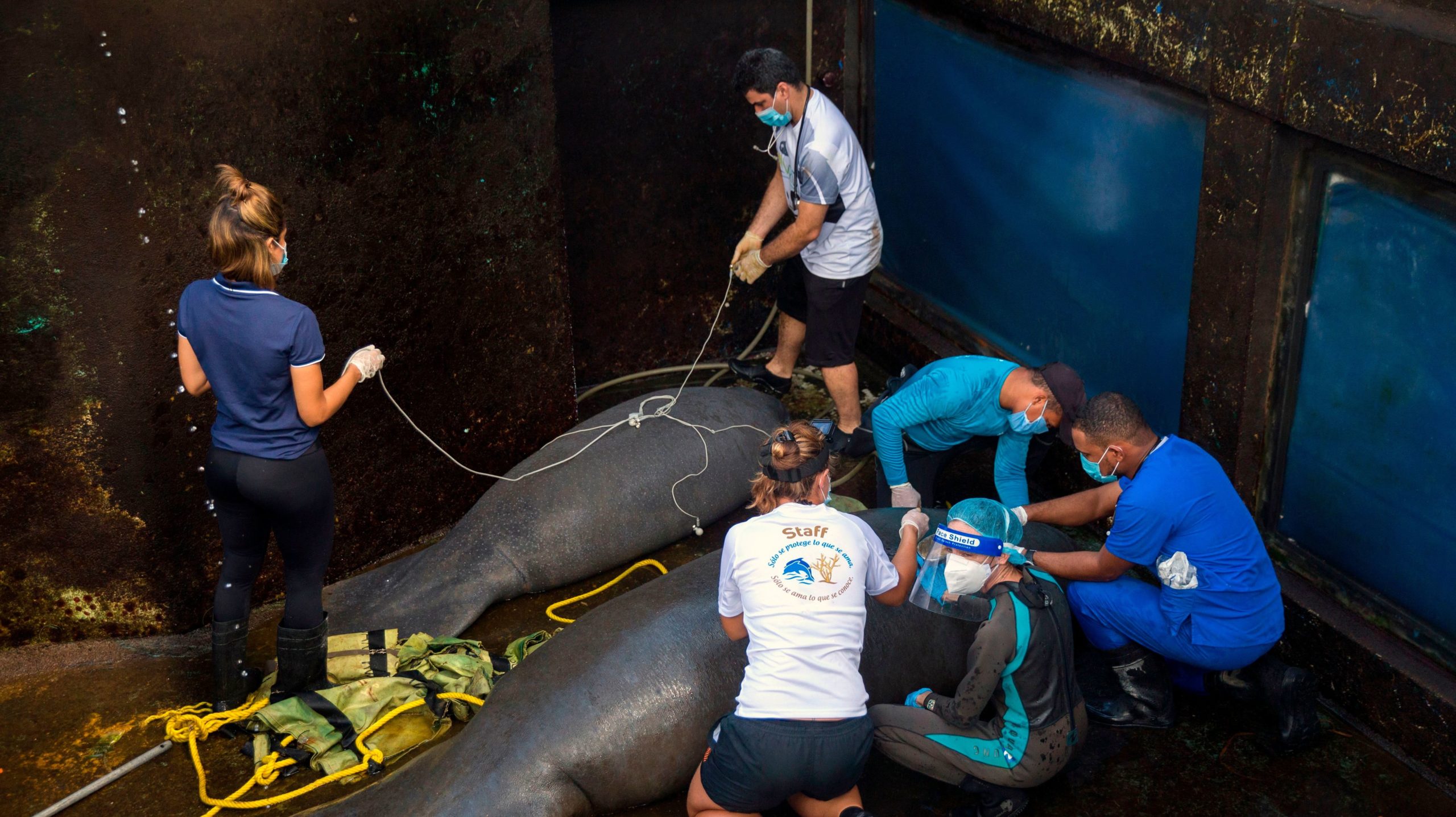
According to EFE, a group of specialists at the Dominican Republic National Aquarium began preparing the manatees for release a few months ago. Preparation involves carrying out tests to control their skin and heart rate and showing them how to look for their own food. The three manatees were used to being fed fruits and vegetables at the facility, something that won’t work when they’re on their own given that they tend to look for food on the seafloor.
To help the manatees learn this, the specialists have developed a system that uses tubes to put food at the bottom of the pools they currently live in. The specialists told EFE that the manatees have taken “a big step” towards release because they’ve already gotten used to looking for food at the bottom of their pools.
Long Live Sea Cows
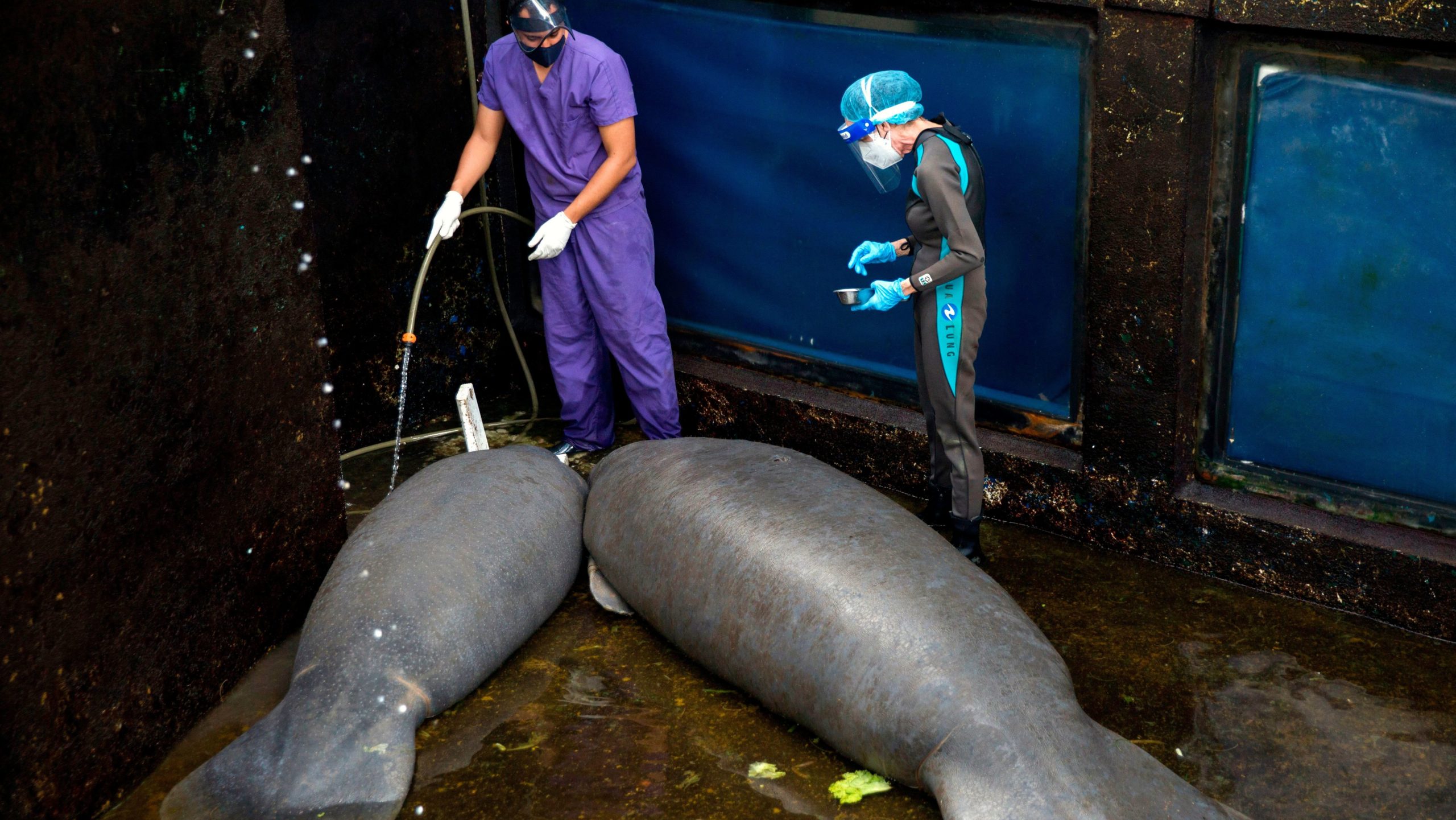
Specialists at the aquarium have also banned humans from interacting with the manatees while they prepare them to return to the ocean. The last step before releasing them will be placing a tracker on the manatees to ensure they’re adapting well to the wildlife. Pepe, Lupita, and Juana are expected to return to the ocean in December. The Gizmodo team wishes these lovely cows a healthy life full of adventures.
